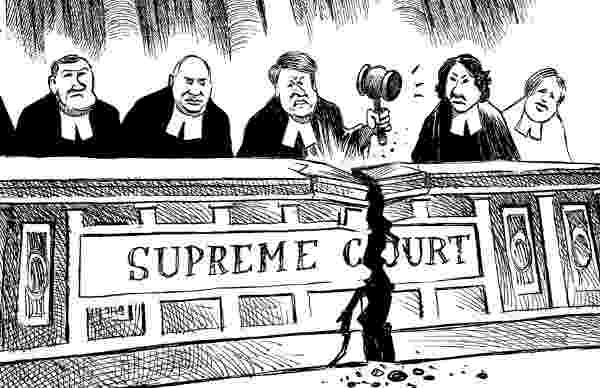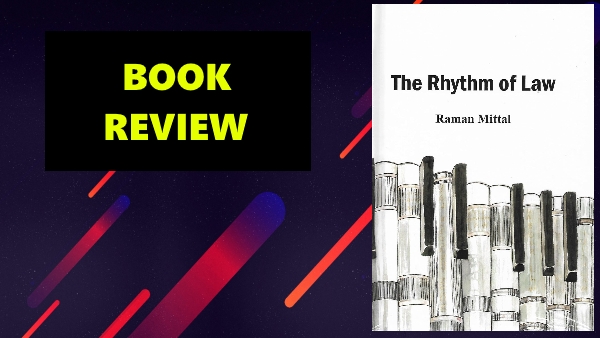State of UP vs Nawab Hussain case dealt with whether a decision of the High Court on merits on a certain matter after the contest, in a writ petition under Article 226 of the Constitution, operates as res judicata in a regular suit regarding the same matter between the same parties.
Appeal by the State of UP before the Supreme Court through Special Leave Petition under Article-136 of the Constitution. Leave was granted.
Facts of Nawab Hussain Case:
- Respondent Nawab Hussain was a Sub-Inspector in UP Police. He was charged under the Prevention of Corruption Act and dismissed from service after due inquiry. The dismissal order was passed by the Deputy Inspector General of Police (DIG Police) and was confirmed by the state government.
- The respondent filed an appeal against the dismissal. The same was dismissed.
- He filed a Writ Petition under Article 226 of the Constitution before the Allahabad High Court. His contentions were that it did not afford him a reasonable hearing and opportunity to defend and that his dismissal was mala fide. The HC dismissed the Writ Petition.
- He then filed a civil suit before the court of civil judge. His contentions were that the Inspector General of Police appointed him and the DIG did not have the power to dismiss him from the service as the DIG was not the appointing authority but was an authority subordinate to IG Police, who appointed him. He argued that his dismissal falls foul of Article 311 (1) of the Constitution of India.
- Article-311 (1) reads as: “311. Dismissal, removal, or reduction in rank of persons employed in civil capacities under the Union or a State. (1) No person who is a member of a civil service of the Union or an all-India service or a civil service of a State or holds a civil post under the Union or a State shall be dismissed or removed by an authority subordinate to that by which he was appointed.
- The State of UP repelled his contentions on grounds of constructive res judicata as laid down by Explanation-IV to SECTION11, CPC, 1908. The state argued, “That all the matters in issue, in this case, had been raised or ought to have been raised both in the writ petition and special appeal”.
- The trial court dismissed the suit because the DIG shall be deemed to be the appointing authority. However, it held that constructive res judicata did not bar the suit. The District Court upheld the decision of the trial court.
- However, the Allahabad HC reversed the decision of the trial court on the point that DIG would be deemed to be the appointing authority. It held that the petitioner could not have been dismissed by DIG in view of the express provisions of Article 311 (1) of the Constitution. It, however, upheld the decision of the trial court on the point that res judicata did not bar the suit.
- The State of UP filed an SLP before the Supreme Court. Leave for granted.
Legal Issue:
Whether a decision of the High Court on merits on a certain matter after the contest, in a writ petition under Article 226 of the Constitution, operates as res judicata in a regular suit regarding the same matter between the same parties?
Decision of the Supreme Court:
- Section 11 CPC is not exhaustive regarding an earlier decision operating as res judicata between the same parties on the same matter in controversy in a subsequent regular suit and that on the general principle of res judicata, any previous decision on a matter in controversy, decided after the full contest or after affording a fair opportunity to the parties to prove their case by a Court competent to decide it, will operate as res judicata in a subsequent regular suit.
- It is unnecessary that the court deciding the matter formerly be a competent to decide the subsequent suit or that the former proceeding and the subsequent suit have the same subject matter.
- The plea taken in the subsequent suit was an important plea that was within the knowledge of the petitioner when he filed the previous writ petition, and this plea could well have been taken in the same petition. So, res judicata bars the suit in the present case.
Important paragraphs from the Judgment:
- The principle of estoppel per rem judicatam is a rule of evidence. As has been stated in Marginson v. Blackburn Borough Council, it may be said to be “the broader rule of evidence which prohibits the reassertion of a cause of action”. This doctrine is based on two theories:
- The finality and conclusiveness of judicial decisions for the final termination of disputes in the general interest of the community as a matter of public policy, and
- The interest of the individual, that it should protect him from the multiplication of litigation. It, therefore, serves not only a public but also a private purpose by obstructing the reopening of matters which have once been adjudicated upon. It is thus not permissible to obtain a second judgment for the same civil relief on the same cause of action, for otherwise, the spirit of contentiousness may give rise to conflicting judgments of equal authority, lead to multiplicity of actions and bring the administration of justice into disrepute.
- It is the cause of action which gives rise to an action, and that is why it is necessary for the courts to recognize that a cause of action that results in a judgment must lose its identity and vitality and merge in the judgment when pronounced. It cannot, therefore, survive the judgment, or give rise to another cause of action on the same facts. This is known as the general principle of res judicata.
- But it may be that the same set of facts may give rise to two or more causes of action. If in such a case a person is allowed to choose and sue upon one cause of action at one time and to reserve the other for subsequent litigation, that would aggravate the burden of litigation.
- Courts have therefore treated such a course of action as an abuse of its process and Somervell, L.J., has answered it as follows in Greenhalgh v. Mallard: I think that on the authorities to which I will refer it would be accurate to say that res judicata for this purpose is not confined to the issues which the court is actually asked to decide, but that it covers issues or facts which are so clearly part of the subject matter of the litigation and so clearly could have been raised that it would be an abuse of the process of the court to allow a new proceeding to be started in respect of them.
- This is therefore another and an equally necessary and efficacious aspect of the same principle, for it helps in raising the bar of res judicata by suitably construing the general principle of subduing a cantankerous litigant. That is why this other rule has sometimes been referred to as constructive res judicata, which, in reality, is an aspect or amplification of the general principle.
- These simple but efficacious rules of evidence have been recognized for a long, and it will be enough to refer to this Court’s decision in Gulabchand Chhotalal Parikh v. State of Bombay for the genesis of the doctrine and its development over the years culminating in the present Section 11 of the Code of Civil Procedure, 1908. The section, with its eight explanations, covers almost the whole field and has admirably served the purpose of the doctrine.
- But it relates to suits and former suits, and has, in terms, no direct application to a petition for a high prerogative writ. The general principles of res judicata and constructive res judicata have, however, been acted upon in cases of renewed applications for a writ. Reference may be made to ex-parte.
- It is not in controversy before us that the respondent did not raise the plea, in the writ petition which had been filed in the High Court, that because of Article 311 (1) of the Constitution he could not be dismissed by the Deputy Inspector- General of Police as he had been appointed by the Inspector-General of Police.
- It is also not in controversy that this was an important plea that was within the knowledge of the respondent and could well have been taken in the writ petition, but he contended himself by raising the other pleas that he was not afforded a reasonable opportunity to meet the case against him in the departmental inquiry and that the action taken against him was mala fide. It was therefore not permissible for him to challenge his dismissal, in the subsequent suit, on the other ground, that he had been dismissed by an authority subordinate to that by which he was appointed. That was clearly barred by the principle of constructive res judicata, and the High Court erred in taking a contrary view.
- The appeal is allowed, the impugned judgment of the High Court dated March 27, 1968, is set aside and the respondent’s suit is dismissed. In this case, we direct the parties shall pay and bear their own costs.
Found the State of UP vs Nawab Hussain case summary useful? We have a bunch of useful topics from the Civil Procedure Code that will help you in your preparation here >>> CODE OF CIVIL PROCEDURE.
Check out our YouTube Channel for free legal videos >>> LAW PLANET YT






